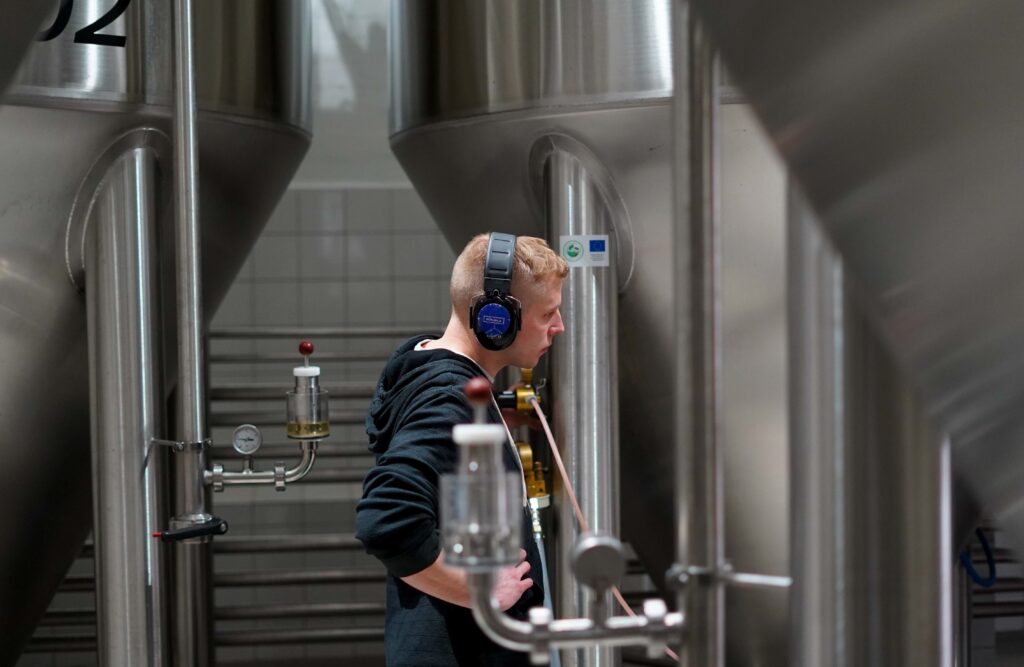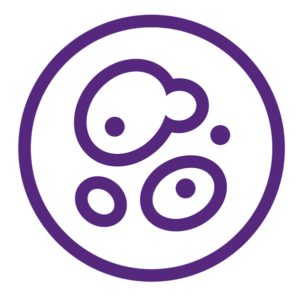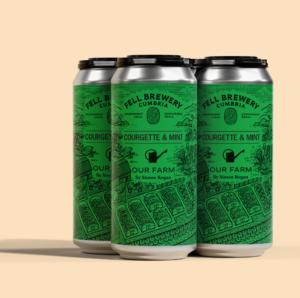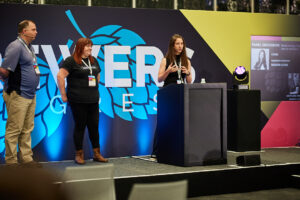Starting out as an outfit that wanted to make beer for drinkers in Tallinn and surrounding areas, Põhjala has gone on to become the world’s Estonian brewery. Producing a diverse array of styles that excite and intrigue, their beers are enjoyed across the globe. And as they approach their 10th birthday, it feels as if they’re only really getting started.
“It’s good to step out of your comfort zone. That’s what excites me,” explains Chris Pilkington, head brewer at Põhjala. “To find yourself in a position where you’re thinking ‘Wow, this is like nothing we’ve ever done before’ is an important place to be.”
And it’s a position Pilkington and the team at the Tallinn outfit find themselves in on a regular basis, which is part of the reason the Estonian brewery has developed such a renowned reputation in its near 10 years making beer.
The latest project Pilkington references is a collaboration with Tempest Brewing, based out of Galashiels in Scotland. Located on the Scottish borders, the brewery lies some 200 miles south of Fraserburgh, the area where Pilkington grew up and would also go on to find his feet in the world of brewing.

“We’re producing a beer that replicates the old ‘160 Shilling Ale’,” he says. “Edinburgh Ale yeast is used for fermentation and we’re also adding heather honey to the mix.”
But the focus point here are the barrels being utilised to age the beer, a skillset that has become part of the brewery’s calling card, both locally and abroad.
“We’ve opted for a blend of Auchentoshan and Glengarioch Whisky barrels. It seemed somewhat fitting to age this beer in barrels from distilleries located close to Tempest, and also where I grew up. “We wanted a particular profile and were prepared to go the whole nine yards to achieve it,” he explains.
And doing things their own way, while going that little bit further when doing so, is an approach that’s been vindicated over the last nine years.
Starting out as a brewery armed with five 24HL FVs, to become one that boasts a 4 vessel, 50HL Rolec brewhouse, Framax filing line (with canning to follow in the next year), and state of the art lab facilities, is evidence enough. And that’s before you even mention the 120 seater taproom and restaurant complete with 24 taps.

The Põhjala of 2020 calls Noblessner home. The historical shipyard area, located by the sea in North Tallinn, has housed the brewery since the end of 2018.
“That first full year here was an expensive one. 2020 was set to be the time where we took everything we had learned so far and improved as a result,” says Pilkington. “Everything was taking shape, until February…”
The Covid-19 pandemic impacted Põhjala as it did each and every business globally. What’s different is the way people react, and overcome, these challenges.
“It’s not been easy,” he says. “We are a small country of 1.3m people and one by one, we saw most of our markets go offline. Whether that was closing the taproom, or losing exports which account for 70% of everything we produce. It was scary to say the least.”
Estonia entered lockdown on 13th March. Thankfully for Põhjala and many businesses like them, early talk of banning alcohol sales in the country during this extended period of emergency, failed to materialise.
“If that came to be then who knows, we might not be here now!” Pilkington exclaims.
On a production front, the team assessed what beers should take priority in tank, offering up opportunity for those that required longer maturation times.
If that came to be then who knows, we might not be here now,” Chris Pilkington, Põhjala
The brewery thankfully navigated these recent challenging months through sales via supermarkets, as well as its incredibly popular online store that has satiated drinkers across Estonia throughout lockdown. In doing so, it has ensured the Põhjala story can continue.
Pilkington is the head brewer and the fifth member of the team to join the brewery, which was founded by Enn Parel, Peeter Keek, Gren Noormets, and Tiit Paananen in 2011. Now, it’s a group with numbers into 50 with 12 in production alone.
While the founding partners could boast some home-brewing knowledge to their collective name, they needed some proven production experience before making the step to a professional brewing business.

Following a chance encounter with BrewDog co-founder James Watt in Aberdeen, they secured some brief intern experience at the Fraserburgh brewery. Here, the aspiring Estonian brewers would encounter the respected brewer Pilkington.
“They came over to learn more about a brewery works, and were interested to see more of the process,” he recalls. “We clicked on the idea of exploration and concepts. Malt was pretty uncool back then but we bonded over discussion of barrel-ageing, and the implementation of ingredients and you wouldn’t usual consider trendy.”
Though not a barrel-aged number, one of Pilkington’s creations that caught the eye of his Estonian counterparts was White Noise; a White IPA brewed with plenty of wheat, fermented with a Belgian yeast with features the addition of coriander thrown in for good measure.
“That’s the beer that got me hired!” he laughs.
The team spent three days in each other’s company before heading home to Tallinn. But in that time, the seeds had already been sown for Pilkington to swap his Scottish home for a new life in the Nordics.
Põhjala’s maiden beer, Öö Imperial Baltic Porter, would see the light of day at the start of 2013. For most of that year, their beers were contract-brewed at other breweries’ production facilities while they prepared to open their own. Construction of the first brewery was completed in April 2014 in Tallinn’s Nõmme district with Pilkington having moved to Tallinn the year previous.

The brewery would start out with the five 24HL FVs but, thanks to the popularity of other early beers such as Rukkirääk, a 5.7% Rye Ale and core beer Virmalised IPA, they would quadruple annual production capacity within two and a half years, frequently bumping up against (and raising) the excise limit for small breweries in Estonia of 400,000L and then 600,000L.
Other early numbers like Session IPA Uus Maailm and Must Kuld, its popular porter, complemented a raft of one-off releases, be they hop-forward or barrel-aged in nature.

“I’m proud of these beers, but it’s interesting how we evolved from an early age,” Pilkington explains. “Starting out, we had the guiding principle of being a local Estonian brewery that would produce some Belgian styles, some IPAs and maybe a stout.”
But the script was flipped.
“Now look at us,” he smiles. “In our minds we’d sell most of our beer locally with the potential for some minor export opportunities. Instead, we found a blank slate and we could do anything. We weren’t happy doing just enough, we wanted to really make a mark.”
And they did just that. Põhjala’s output can be split into four categories; core beers, specials, Cellar Series and the Forest Series.
There would be days where we’d be taking taxis between sites complete with thousands of Euros worth of kit,” Chris Pilkington, Põhjala
In addition to the aforementioned Must Kuld, Uus Maailm, Virmalised, Öö, the core is completed by Orange Gose, Pilky (Pilsner), Rye River, Õhtu (Porter), Kosmos IPA and Tundra, Põhjala’s first non-alcohol beer, an IPA brewed with local spruce tips.
The brewery’s specials range is home to collaborations, riffs on core beers and seasonal releases such as the 12.5% Winter Bänger. inspired by British Christmas Cake, gluten-free Imperial Stout Gimme Danger, Tuul – an Imperial Gose with local delicacy whitecurrants Tuul and Moonraker, a DDH IPA that features a rotating hop bill.

However for overseas drinkers, which account for the majority of Põhjala’s production, it’s the beers that stem from the Forest and Cellar Series, that most hold as a reference point for the brewery’s output.
“The majority of our production is in lighter beers, but it’s nice to challenge people’s perceptions for what your brewery is about,” says Pilkington. “Approximately 70% of our volume is in the lighter beers, but I accept that many of these don’t travel to export markets as much our heavier releases.”
He adds: “However, I would be more than happy for that to reverse and for darker beers to become our focal point. It’s a badge of honour for being respected due to the beers you make, regardless of style.”

Either way, the move to their new facility in 2018 enabled the team to produce more beer than ever before.
“We approached the expansion wide-eyed,” Pilkington recalls. “The options were there; move to a new unit and invest in a slightly larger 20HL brewhouse or take a bigger step, draw a line and in doing so, build a forever home.”
They chose the latter.
An order for an impressive 50HL brewhouse from Rolec was placed in 2017, with construction taking place the following year.
“It felt both like a long time and one that passed very quickly, too. When the kit arrived in 2018, I thought I’d be on site once or twice a week. Instead, I barely left the building for all of July and August!” he smiles.
“We ended up spending much more time sweating the small stuff during installation – adding custom pipework and valves everywhere so we could do anything we could think of, like mash in with juniper tea, add apple juice to the wort kettle, cool wort before adding whirlpool hops, or safely add hundreds of kilos of whole fruit whilst boiling. The install and commissioning team ended up having to re-draw the diagrams so many times they lost count.”

With the entire team going above and beyond, Põhjala would end up running both breweries concurrently for around five months.
“I don’t recommend it, but it happens,” laughs Pilkington. “There would be days where we’d be taking taxis between sites complete with thousands of Euros worth of kit.”
He adds: “We couldn’t slow down at the old brewery until the new one was fully online. We ran things down at the former site to two batches a month from a height of doing 19. And once we were happy at our new home, it made sense to cease completely.”
Despite the draining workloads, Pilkington was happy with the transition to Põhjala’s new facility. The occasional challenge in achieving consistency on beers such as its Must Kuld Porter acted as a troubleshooting exercise more than anything else.
“Early batches on the new brewhouse were just different to what we were used to,” he ponders. “The coffee and chocolate was very prominent, but not in the way we wanted. Perhaps it was too strong.”
Pilkington says: “So we worked backwards. The issue wasn’t the water, nor was it happening in fermentation.”
It was time to check the mill.
“The dark malts were being crushed too finely. Simple as that,” he explains. “We just need to look extensively to locate the source of the problem.”
Since commissioning, Põhjala has produced 227 batches on the new brewhouse, packaging over 1.28 million litres with many more resting in hundreds of barrels of all types.
The brewery exports these beers to more than 40 countries. France and Finland are its two biggest markets but other destinations include the UK, Denmark, Germany and Spain, as well as further afield to Brazil, Australia, Canada and Chile, to name a few.

“Having France as our biggest market still suprises me to this day, but it’s due to a lot of hard work early on team that made a lot of great connections,” says Pilkington.
Of the 200HL of Virmalised IPA the brewery produces in a normal month, a third of this will be kegged and sold direct to Les Berthom, a chain of bars in France that is going from strength-to-strength.
Elsewhere, the geographical proximity of Helsinki has, on occasion, allowed the team to keg a beer one afternoon and take it via boat to the Finnish capital for a meet the brewer event the same evening.
Pilkington values each of the brewery’s relationships, but is particularly fond of the partnerships they’ve developed with smaller businesses.
“Having our beer brought over to countries such as Bulgaria, Hungary and Slovenia is really rewarding,” he says. “They are developing their scene, like we used to, so it’s great having them look to us for inspiration rather than settling for the norm.”
Distributors in these countries, like most of the brewery’s customers, procure beers produced as part of the Forest and Cellar Series.
The latter allows the team to explore their passion for “oily, velvety, liquid goodness”, utilising a variety of Bourbon, Cognac. Sherry and Tequila barrels to create a wealth of world-class beers.

Põhjala’s reputation for these beers has catalysed the creation of a wider scene whereby Estonian beer has become something of a by-word for the dark, decadent and delicious.
Pilkington says: “There is a strong link between this country and the dark, winter months. The popularity of these beer styles has perpetuated that growth in more breweries making them, and that’s a good thing.
“It’s also fundamental, as a brewery here, to do something different. If you want to grow then you need to export. Estonia doesn’t have a strong taproom model and the on-trade can also be a challenge. So you need to be making beers that consumers overseas will want to try.”
The Cellar Series features diverse creations such as Honey Laku, a 10.5% Imperial Porter brewed with heather honey, liquorice root, and blackcurrants, aged in Pedro Ximenez and Bourbon barrels. 10 Apple Stout is a 12% Imperial Stout collaboration with To Øl designed to celebrate the apple. This features five varieties of apples from Denmark, and Five from Estonia, treated in 10 different ways and aged in Calvados barrels.
Celebrated release Cocobänger, an Imperial Stout with Coffee and Coconut has also been given the barrel-aged treatment thanks to time spent in freshly emptied American Rye Whiskey barrels.
This series of beers complements the aforementioned Forest Series. The forest has a deep influence on Estonian culture and cuisine, something the team has embodied in this range of beers. In these editions, they twist rare botanicals, forest ingredients and Estonian folk-medicine with ancient methods into extraordinary beers.

“Initiatives like the Forest Series are very important to us,” says Pilkington. “They are not big projects when it comes to volume but they allow us to explore and to reconnect.”
He adds: “I feel a kinship here, similar to the highlands of Scotland. Using the ingredients you forage and source from these environments are a non-nationalistic way to show off what Estonia can be.”
And it’s that sense of provenance, imbued in the beers they produce, which assures Pilkington that Põhjala is very much a product of its environment.
“Could we exist elsewhere? For me, this brewery is product of Estonia,” he explains. “Estonian people love trying new things so that gave us confidence in experimentation. If we were not able to go out with that attitude early on then things might have ended up very differently. It drove us to innovate.
“Often people want something different in life, and we’re more happy to provide that.”









